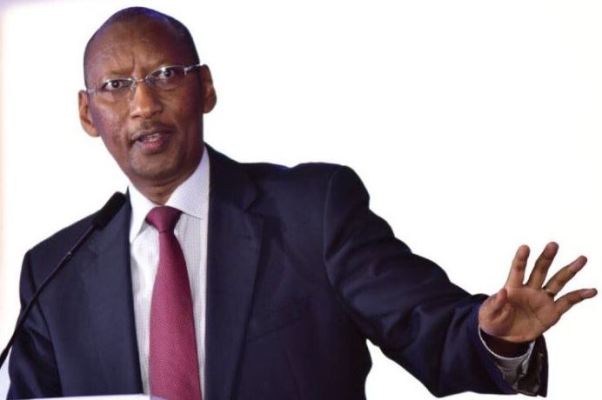
John Rwangombwa Central Bank Governor presenting the 2016 Monetary Policy and Financial Statement. He says Rwanda’s economy remains resilient
Rwanda is stepping up efforts to cut down the biting trade imbalance. According to 2016 monetary policy and financial statement released today by Central Bank, the country’s trade deficit dropped by 5.9% in 2016 (representing $1649.7m) from $1752.5m in 2015.
While presenting the statement at Serena Hotel in the capital Kigali, Central Bank Governor John Rwangombwa said that improvement has been attributed to the country’s continued economy.
“Despite global and regional economic challenges, Rwanda’s economy remains resilient at 6.1% in 2016 from 6.9% in 2015,” said Rwangombwa.
According to National Institute of Statistics of Rwanda (NISR), the deficit in the balance of formal trade in goods was $83.52 million in December last year, registering a decrease of 3.33% compared to the previous month of November 2016.
Year-over-year, said the report, the formal trade in goods deficit decreased by 21.59% on the deficit of December 2015.
In 2014, Rwanda intensified efforts to brand local products to expand its export base and cut down the nagging 75% trade imbalance.
Rwanda’s trade imbalance continued to widen up to last year. For instance, Uganda and China remained major exporters to Rwanda as of December last year.
According to the National Institute of Statistics of Rwanda (NISR), Rwandans increasingly demanded for; cement, cellular phones, medicines, vehicles and fertilisers from these countries.
These commodities, the report noted, represented 15.95% of Rwanda’s total imports in the third quarter of 2015.
There is a possibility that home-made products can help the country to significantly cut down trade imbalance, if consumers resort to buying them and get rid of expensive imported materials.
For instance, during a visit to Special Economic Zone (SEZ) this month, President Paul Kagame advised local manufacturers to first think about local market before focusing on the region while consumers back home are ‘starving’.
The President visited StrawTec, a factory that makes construction materials – boards – from straws, PharmaLab – a medicine plant and C&H Garments, Chinese apparel plant with a franchise in SEZ and Africa Improved Foods, a $45million food factory.
For instance, despite presence of a textile factory in Rwanda since 1980s, the country spends over $15 million to import second hand clothes every year.
Meanwhile, Governor Rwangombwa said, Financial Institutions have significantly pushed up the rate of acquiring loans among Rwandans.
For the past five years, he said, City of Kigali tops other four provinces in new authorized loans distributed with a highest share (73.9%).
However, men outpaced women in acquiring these loans. For instance, women who were financed by banks remained low, representing an average of 58,573 between 2012 and 2016.
Governor Rwangombwa stressed that modernization of the payment system has been a catalyst to ensuring financial sector stability and growth.

